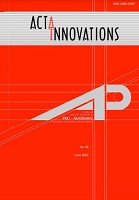OPTIMIZATION OF PROCESS PARAMETERS IN TURNING OF MAGNESIUM AZ91D ALLOY FOR BETTER SURFACE FINISH USING GENETIC ALGORITHM
OPTIMIZATION OF PROCESS PARAMETERS IN TURNING OF MAGNESIUM AZ91D ALLOY FOR BETTER SURFACE FINISH USING GENETIC ALGORITHM
Author(s): Pradeep Kumar MadhesanSubject(s): Economy, Methodology and research technology
Published by: Centrum Badań i Innowacji Pro-Akademia
Keywords: genetic algorithm; magnesium alloy; turning; optimization; pareto front; RSM;
Summary/Abstract: This research examined at the optimum cutting parameters for producing minimum surface roughness and maximum Material Removal Rate (MRR) when turning magnesium alloy AZ91D. Cutting speed (m/min), feed (mm/rev), and cut depth (mm) have all been considered in the experimental study. To find the best cutting parameters, Taguchi's technique and Response Surface Methodology (RSM), an evolutionary optimization techniques Genetic Algorithm (GA) and Non-dominated Sorting Genetic Algorithm-II (NSGA-II) were employed. GA gives better results of 34.04% lesser surface roughness and 15.2% higher MRR values when compared with Taguchi method. The most optimal values of surface roughness and MRR is received in multi objective optimization NSGA-II were 0.7341 µm and 9460 mm3 /min for the cutting parameters cutting speed at 140.73m/min, feed rate at 0.06mm/min and 0.99mm depth of cut. Multi objective NSGA-II optimization provides several non-dominated points on Pareto Front model that can be utilized as decision making for choice among objectives.
Journal: Acta Innovations
- Issue Year: 2022
- Issue No: 43
- Page Range: 54-62
- Page Count: 9
- Language: English

